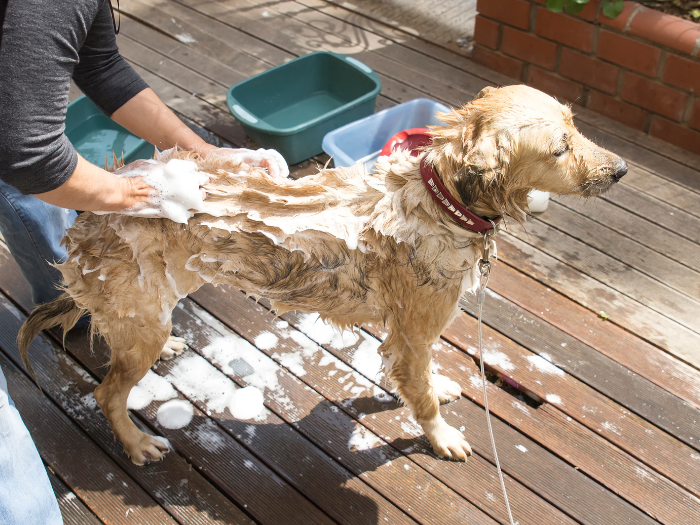
Introduction to Dog Bathing Frequency
Determining the appropriate bathing frequency for your dog is essential for maintaining their hygiene and overall well-being. In this guide, we will explore the factors that influence how often a dog should be bathed and provide expert advice to help you establish a bathing schedule that suits your dog’s specific needs.
Factors to Consider When Deciding Bathing Frequency
Several factors should be considered when determining how often you should bathe your dog:
- Breed and Coat Type: Different dog breeds and coat types have varying bathing requirements. Dogs with oily coats may require more frequent bathing, while those with dry skin may benefit from less frequent baths to maintain natural oils.
- Skin Condition: Dogs with certain skin conditions, such as allergies or dermatitis, may require specialized bathing routines as recommended by a veterinarian. It’s important to consider their specific needs when establishing a bathing frequency.
- Activity Level and Environment: Dogs that spend a lot of time outdoors or engage in activities that result in dirt or odor accumulation may need more frequent baths. Environmental factors, such as living in a dusty or humid area, can also influence bathing frequency.
- Personal Preference: Some dog owners prefer more frequent baths for their dogs to ensure cleanliness and a pleasant scent. However, excessive bathing can strip the skin of natural oils and lead to dryness and irritation.
General Bathing Guidelines
While bathing frequency varies depending on individual factors, the following general guidelines can help you establish a baseline:
- Monthly Baths: Most dogs can benefit from a monthly bath to maintain general hygiene and remove surface dirt and debris.
- Every 6-8 Weeks: Dogs with normal skin and coat conditions can typically be bathed every 6 to 8 weeks. This interval allows for the replenishment of natural oils without excessive drying.
- As Needed Basis: Dogs that have specific hygiene requirements or are prone to certain conditions may require more frequent baths. This can include dogs with skin allergies, certain medical conditions, or those that have rolled in something particularly foul.
Signs Your Dog May Need a Bath
While establishing a regular bathing schedule is important, it’s also essential to recognize signs that your dog may need a bath between regular intervals:
- Foul Odor: If your dog has a persistent unpleasant odor that cannot be eliminated with brushing or grooming, it may be time for a bath.
- Dirty or Matted Coat: A visibly dirty or matted coat may indicate the need for a bath. Mats can lead to skin irritation and discomfort if left untreated.
- Excessive Shedding: If your dog is shedding excessively, a bath can help remove loose hair and promote a healthier coat.
- Skin Irritation or Itching: Dogs experiencing skin irritation, itching, or allergies may benefit from more frequent baths using specialized products recommended by a veterinarian.
Conclusion
Determining the optimal bathing frequency for your dog involves considering various factors such as breed, coat type, skin condition, activity level, and personal preference. While a general guideline of monthly baths or every 6-8 weeks is suitable for many dogs, individual needs may vary. Pay attention to signs that your dog may need a bath between regular intervals and consult with a veterinarian for specific recommendations based on your dog’s unique circumstances. Remember, maintaining proper hygiene is crucial for your dog’s overall health and well-being.
